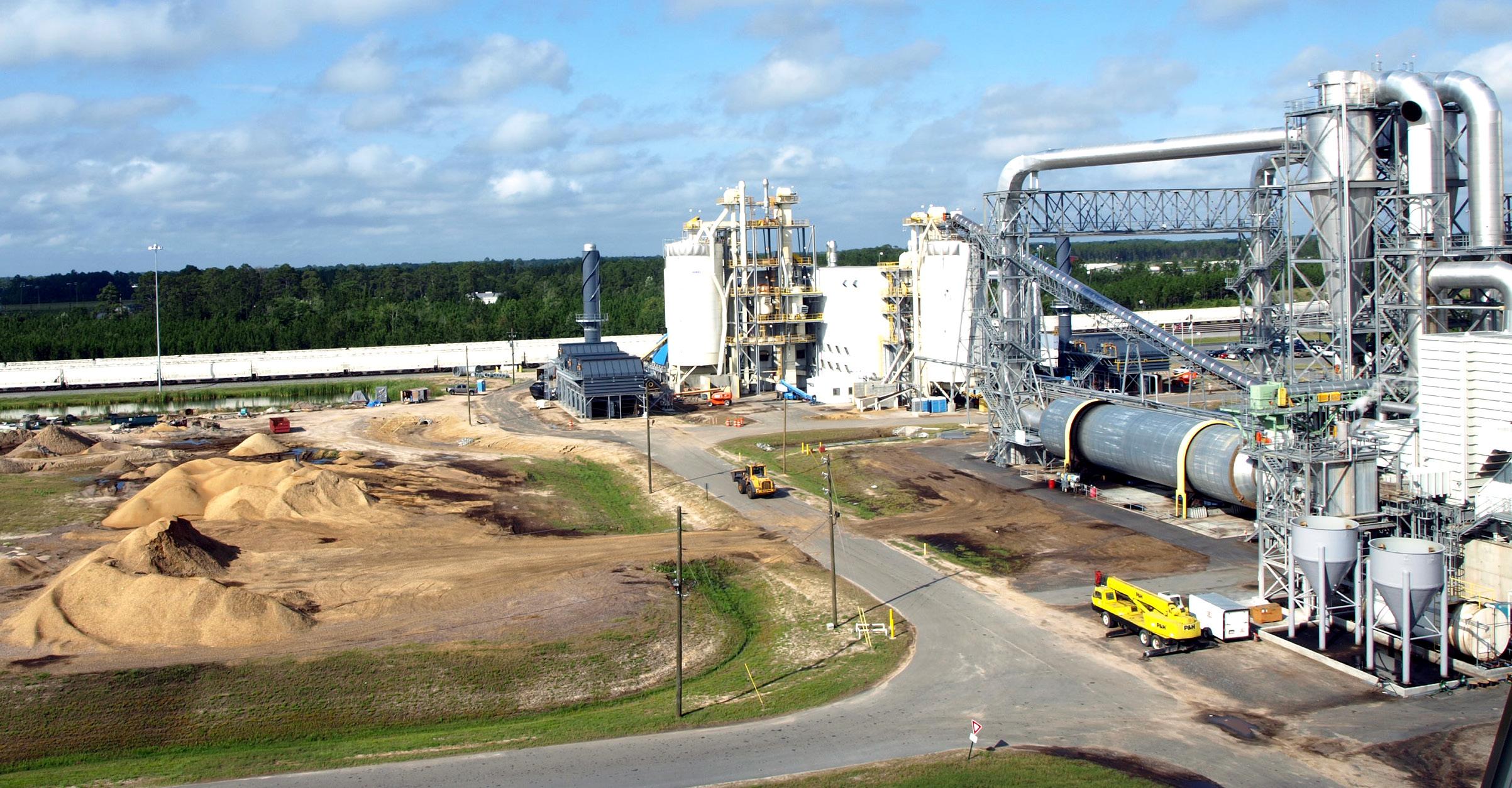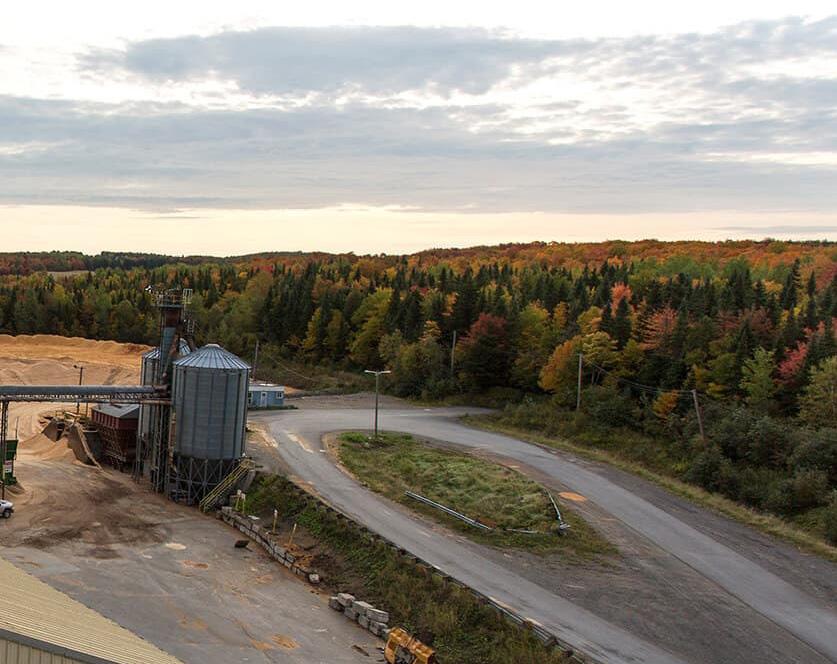
4 minute read
Mountain of Ambition
BY KATIE SCHROEDER
begin utilizing all of that timber—chipping and drying—and also turning it into pellets. Our pellet operation is a way to utlize our waste and logs that we kind of were struggling [to know what to do with].”
Aspen Wood Products and Aspen Wall Wood primarily source their feedstocks from public lands, including the San Juan National Forest, Colorado state lands, Utah state lands, northern New Mexico andU.S. State Forest Service lands, along with some sourcing from private ranches. All of the pellet feedstock will be waste wood from Aspen Wood Products process, Sitton explains. MVP will not purchase any sawdust or chips from other sources. Initially, the pellets will only be produced with aspen wood. In the longterm, however, Sitton and his team intend to use POL as well, to create a pellet that blends a variety of wood types. The plant will annually produce 18,000 tons of pel- lets on a single shift, pushing 30,000 tons on a double shift once markets develop, Sitton explains.
Plant Specs
Building the facility itself required innovation and a blend of new and reused components. MVP uses three pellet mills from Colorado Mill Equipment. Rated at two tons an hour each, the mills are capable of producing six tons per hour “to start with at least,” Sitton explains. The cooling tower, grinder and cooling system were also purchased new from CME.
Dust collection and fire suppression systems did not need to be bought new due to the fact that Aspen Wood Products already had those installed. “Because of the other products we make in our plant, we already had dust collection and fire suppression in place, both in the building and then for collection of dust off of the other systems that we have in place,” he says. “So, we just extended that and right-sized it for wood pellets.”
The material moving systems and conveying systems in the pellet facility were built in-house and made out of repurposed materials, due to difficulties in attaining new parts because of supply chain delays. “We’re a pretty typical sawmill in that we reuse equipment, and we have to fabricate and manufacture lots of equipment that we normally use on a daily basis anyway—it’s kind of in our DNA,” Sitton says. He and his team took elements such as motors, motor controls and gear boxes used in their milling system and repurposed them for the pellet line.



MVP is a member of the Pellet Fuels Institute and is in the process of getting their pellets certified with PFI’s Quality Mark, which, according to PFI, indicates pellet producers who receive regular thirdparty plant inspections and lab testing.


Once






Startup Challenges
As of late March, MVP was still in the process of startup. Sitton explains that there has been some problem-solving to get the plant running properly. Some of the challenges they have been facing with startup include supply chain difficulties, material handling and feedstock moisture. “When we started, we anticipated that making pellets was more of a science than an art, but we’re finding that it may be more art than science,” Sitton says.
The primary feedstock MVP currently uses is aspen waste wood, and one of aspen’s unique qualities is its highly absorptive nature. This quality is great for some of the products Aspen Wood Products makes, including aspen A/C pads that absorb water for air cooling and erosion control prod- ucts. “By nature, it absorbs and releases moisture, so part of our challenge is that we’re having to remove moisture to be able to make a pellet that’s quality,” Sitton says, explaining that moisture degrades the material’s size after it’s ground, negatively impacting the quality of the final product. He and his team are working to resolve the issue by installing a drying system to keep the aspen at a consistent entry moisture level.






MVP was originally planning on commissioning in summer 2022, but supply chain issues delayed startup until early April 2023. These bottlenecks made it difficult to acquire a variety of components, particularly electrical and plastics.
The material moving system has been the most challenging element of the facility, Sitton explains. The first day the plant was started up, he and his team discovered the material moving system was not working properly. “We had to modify our vents to handle the material better, so that took us a couple of weeks by the time we got parts, motors and bearings, and all the stuff that it required,” he says. The material handling needed for a pellet mill is different than what Aspen Wood Products and Aspen Wall Wood normally use. “We’ve never really ground sawdust,” Sitton says. “We’ve never really moved fine material like that. So, material handling, material moving, specifically for pellets, is [a] different pro cess than we’re accustomed to.”

Phase two of the project will be intro ducing a grinding system that can handle POL into their system. “We peel our logs today to make our products, so we’ve got peeled log decks waiting to make pellets,” Sitton explains. These other wood types would be added to the aspen already in the process and be used to make blended or non-aspen pellets.
Markets and Benefits



MVP has found a market for both the heating pellets and animal bedding pellets locally, and plans to eventually produce both products. Aspen Wood Products cur rently sells bagged shavings for livestock and pet stores, Sitton explains. “Being a part of those markets already, we intend and expect to begin making a bedding pellet maybe as much of a focus for us as heating pellets are,” he says. “Only yet to be seen is what the markets do as far as getting into business. We are working on labeling, bagging and all of that … specifically for animal bedding—those pellets will be purely aspen pellets.” Down the road, Sitton hopes to also start making cat litter.
As production commences, Sitton finds it rewarding to see all of the sawdust going directly into the pellet line and being turned into a product rather than waste wood. “We’re real tickled about the ability to make our operation a lot more efficient, by having the pellet mills in place,” he says. “And it’s cool to see the pellets actually coming out of the machines turning sawdust— which has always been a challenge for any sawmill—into a product like this. It’s a thing that we really appreciate.”

Author: Katie Schroeder Katie.schroeder@bbiinternational.com













